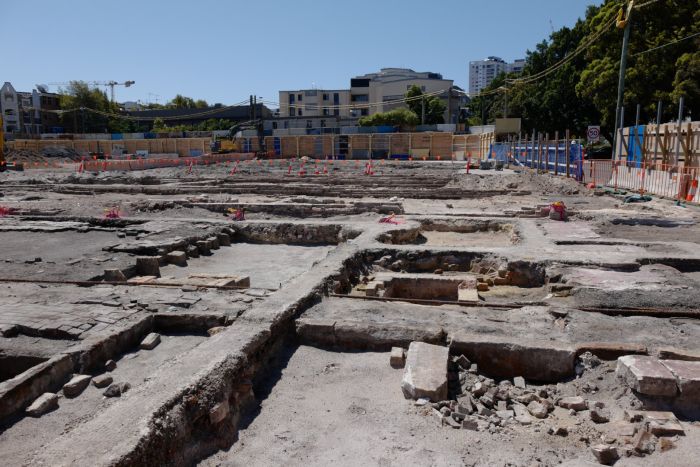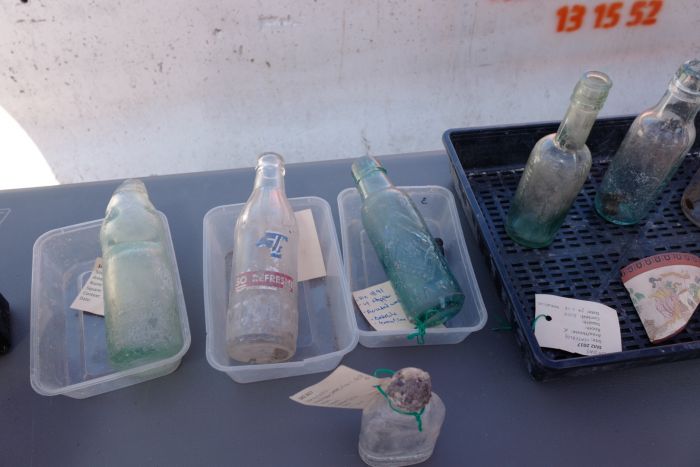WATERLOO: A heritage viewing of the station site on Botany Road, Cope and Raglan streets was conducted by Sydney Metro City & Southwest on Saturday February 10. Investigations by a team of archaeologists led by Jennie Lindbergh have revealed evidence of terrace houses buried beneath the concrete for more than a century.
Each room has been gridded into one-metre square sections and the soil sieved, indicating areas of activity such as where children played or clothing was mended.

“In the mid-19th century, noxious industries were moved out of the city and Waterloo-Alexandria became the centre of washing, tanning and soap-making,” said Ms Lindbergh, pointing out sandstone foundations, worn brick and inverted-bottle pavers, and explaining how workers came to build their semi-detached brick homes in “willy-nilly” fashion along Botany Street (now known as Cope Street).
“Now, there’s very little history written for this area before 1855 and that was a tricky find. There are no council records before 1888, they seem to have been lost or destroyed.
“I’ve been able to work out some of the history thanks to a helpful book [a novel about the Buckland Street Push entitled Jonah] by Louis Stone published in 1911. Along the northern part lived William West, a postmaster and councillor, and next was John Glover, a clerk and carpenter. But his wife Ann, after his death, in probably the late 1850s, becomes the first registered female builder in Australia.

“So John Glover had the biggest house, which was just over there [towards Raglan Street]. And it’s described as having six rooms, two storeys, obviously subdivided later, because it looks as if it’s subdivided on the plan, but it’s also described as having a good well. Now, the interesting thing is that the city water plans don’t show any well.
“And then in this same area, we have Joseph Sawyer, who is described as a good-looking man, not too bright, he has a wife, children, and his mother living on Botany Street, and then he takes up with a showgirl. And he moves into Castlereagh Street, where he had some more children. And his wife, Catherine, becomes the first recipient of maintenance, and the amended Destitute Wives and Children Act of 1858.
“William Powell builds a terrace here in 1869 [Powell took out a 99-year lease of the entire block in 1855]. And the only other person I know of is just down towards the south, Alfred Flack, who has a dye-making business from 1858.”

Artefacts found, including drink and medicine bottles, marbles, buttons, a Cupie doll and a telegraph transmitter, will be preserved for future public viewing.
This month will see heritage work completed before a deeper-level examination of the site for artefacts of Indigenous cultural significance is carried out.
Two tunnel-boring machines will make their way from Marrickville with “break-through” at Waterloo expected in early 2019.





